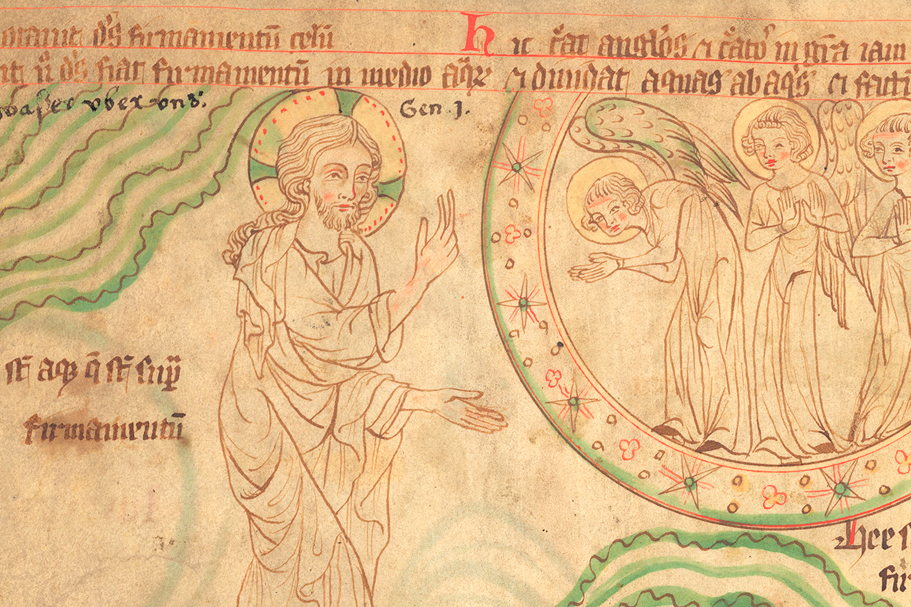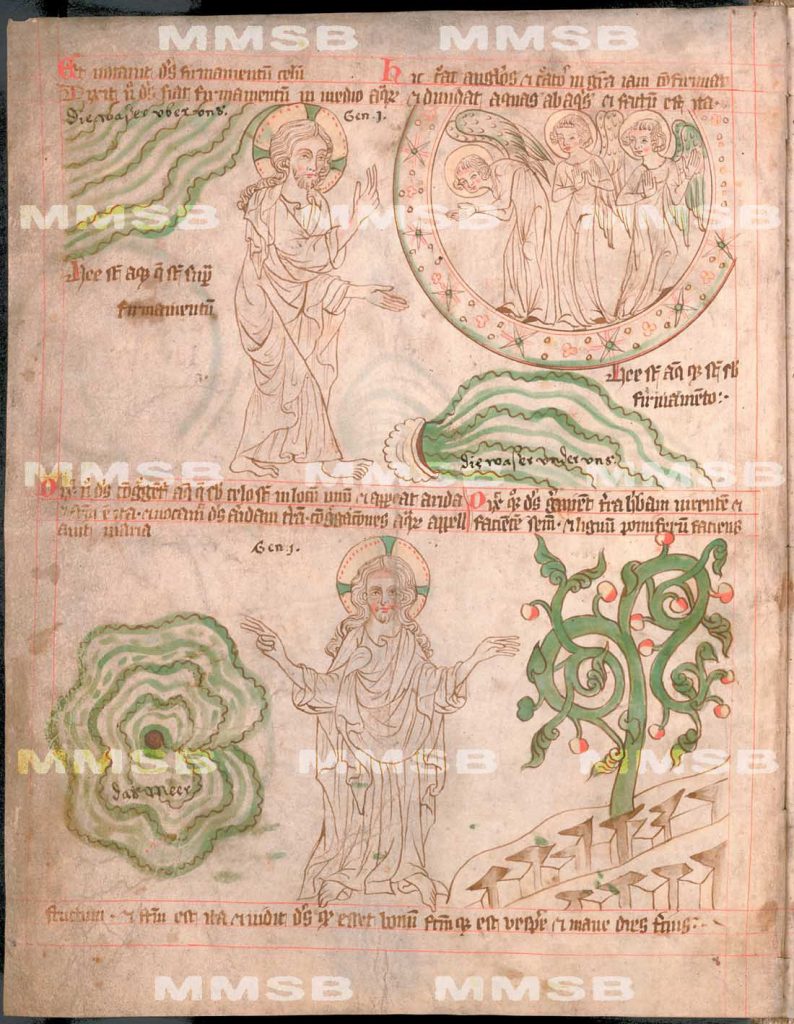Velislav Bible


is the most voluminous medieval picture book in Central Europe. Even the Krumlov Picture Codex (Liber depictus) that originated at about the same time, i.e. the mid-14th century, is no match. Yet, characteristically, there is no doubt that the two manuscripts are of Czech origin, reminding one about the dominant position of Czech culture in Central Europe during the Late Middle Ages.
Document: Biblia picta Velislai – Prague, National Library of the Czech Republic, XXIII C 124
Dating: ca. 1340
The manuscript has a comic book character. This means that the artistic expression in the Velislav Bible is primary, while the language plays just a secondary role. Capturing coherent actions, the images are structured into cycles, episodes, and motifs, while the written content is limited to very brief epitomes of the Latin text of the bible comprising individual verses. They are either written into lines forming the upper or bottom frames of the images, they separate the individual scenes in strips arranged on top of one another, or they are entered to mark the individual depicted figures or objects.
Velislav, whose depiction is found in front of Saint Catherine on fol. 188r with the text in the strip that reads: Sancta Katherina, exaudi famulum tuum Vellizlaum, commissioned this richly artistically embellished manuscript. Recorded with certainty in historical sources in the years 1325–1367, Velislav was a notary in the chancellery of King John of Bohemia and a notary and protonotary in the chancellery of his son and successor Charles IV (he terminated his work for the chancellery in 1362). Furthermore, he was a canon of the Vyšehrad Chapter of Saint Peter (from 1334), a canon of the All Saints Chapel at Prague Castle (from 1339), a canon of the Metropolitan Chapter of Saint Vitus in Prague (provision from 1344), and a canon (from 1354) and dean (from 1356) of the Chapter of Saint Apollinaris in Sadská.
The Velislav Bible content is grounded in the blending of the history of salvation and the history of the world. The latter is primarily depicted in its political and theological aspects and represents a somewhat particular concretisation of the biblical history of salvation. As a deep and the only basis for the world’s history, the history of salvation is thus directly tied to Czech history. Since the Velislav Bible content does not ignore the universal and eschatological aspect, meaning it covers the events at the end of the world before the Last Judgement (just as it covered the Creation), it not only presents mere history, but also the idea of historicism, in which the history of salvation is not just a parallel, but also a direct essence of the world, i.e. they are related theologically as well as philosophically and historiosophically.


